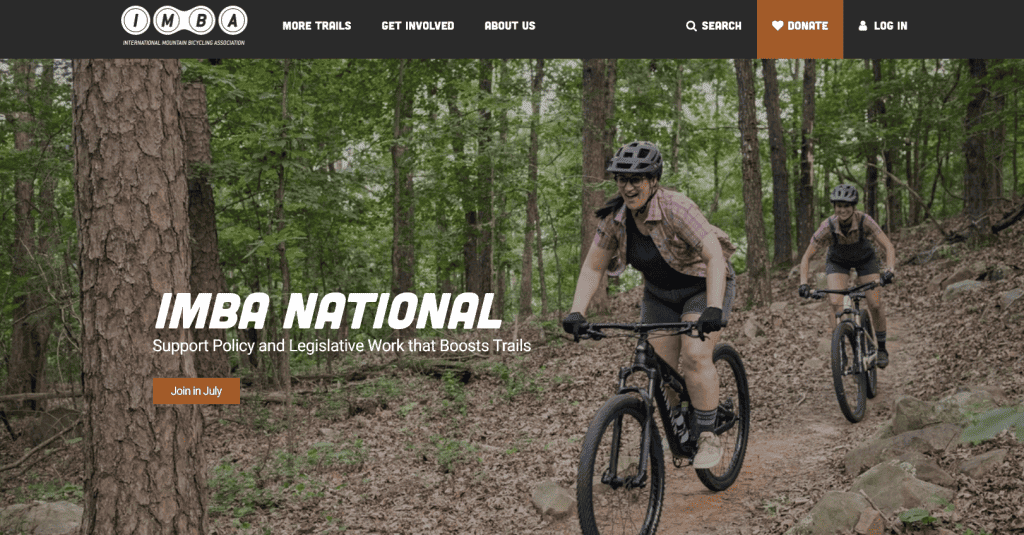I was alerted to this comment letter by this Colorado Public Radio article and the headline : “What do ranchers, oil producers and bike groups have in common? They all want a say in new federal land management rules.” Bike groups was a new one, so I decided to take a closer look.
Note: if you work for an NGO who submitted comments, please post them on your website. This makes it easier for us to hear your thoughts!
Here’s a link to the IMBA letter. I thought they did a great job on the letter so I recommend reading the whole letter. I’ve pulled out a few sections that I think are both important, and agreed upon by many groups in the other letters I’ve read, from traditional user groups, renewables folks, the PLF and others.
IMBA Says Process is Flawed
The Proposed Rule is far too vague and undefined in its current form. If the BLM is asking general questions such as how to name new programs, what program duration and terms
should be, what areas should be eligible, what actions should be allowed, and many more questions; this indicates the BLM has not fully developed the proposed rule. What the BLM
ultimately incorporates in the final rule, after considering public comments, will be completely unknown to the public. This is an inappropriate process. This reiterates the need for the BLM to take these public comments into consideration and develop a final draft proposed rule or supplemental draft for comment. While we understand that timing is important and delay is not ideal, the BLM has stated that this is a once-in-a-generation conservation rulemaking opportunity. Therefore the BLM should ensure it gets this right. Oppositional lawsuits and legislative blocking will delay it to a greater extent and if the public does not support the outcome, that will erode public trust.The proposed rule should have clarified the full range of actions being presented under the proposed rule so that the public can comment on them rather than answer the questions the
BLM has posed. Having the next iteration of the rule be a final rule is an improper way to handle this comment period. The public will not have the opportunity to view and provide feedback on what others may have presented and how the BLM incorporated it, which could lead to unnecessary lawsuits and a poorly considered Rule. The clarification of a supplemental Draft Rule would ensure transparency and predictability for the public and help avoid misunderstandings or misinterpretations of the framework.
Recommendation:
1. The BLM should provide the public with the next iteration of a proposed rule–a supplemental draft or final draft–which incorporates the public comment from this period.
2. We recommend the BLM err on the side of extra public involvement.
I agree with this observation and recommendation. Not only that, I think most of the Groups With Concerns, that is 1. Grazers 2. PEER 3 PLF 4 Renewables Folks and 5. Oil and gas and miners would probably agree.
IMBA Doesn’t See the Case Being Made
Here they sound surprisingly like me, except quite a bit more articulate.
Recommendation:
1. According to the Federal Register Rulemaking process, the BLM must demonstrate the need for the Rulemaking and that the Rule will garner the intended outcomes or the Rule is invalid. The Proposed Rule needs to be more clear why this rulemaking is the necessary solution and more importantly why current regulations are not sufficient in achieving this despite the “ample authority and direction”.
2. What barriers stand in the way of using the existing tools? How will the new framework proposed in the Rule resolve barrier, considering current staff and budget shortfalls.
3. Please provide greater detail on why existing tools are failing the BLM.
IMBA Has Concerns About Defining Non-Use to Be Use
We assume this to mean that the use, in this context, is intended to be a “lack of use.” We find it hard to support the inclusion of protection being considered a use but employed as a lack of use.”
**************
Our recommendation:
1. Instead, the Final Rule should seek to ensure that conservation is an actionable management practice to weave throughout all management decisions via mitigation and restorative activities, and the outcome of these actions is land and important resource protection. Conservation as a use in the context of the rule should be about restoration and improvement activities that can often coexist alongside other uses as intended by FLPMA and the multiple use mandate. Effective protection is inherently less capable of coexisting with other uses. Protection relies upon lack of use.
2. Mountain biking is an appropriate use of public lands. It does not need to be allowed everywhere to achieve that, but under FLPMA’s multiple use mandate, mountain biking use can be compatible with resource conservation and intact landscapes.
IMBA Has Concerns About Leases Leading to Privatization
Is the term “conservation lease” the best term for this tool?
IMBA believes the Lease program should be renamed the “Restoration Lease” program and focus its efforts on restorative actions. Leases should not be used to prevent action or prevent use (see comments above). Leases should only be issued to entities for projects that result in direct improved conditions. Leases should not be issued to entities who plan only to protect existing conditions by preventing action/use. That is a slippery slope to privatization.

San Miguel County (Telluride, CO) Commissioners: “The rule is a long overdue way to deliver on the BLM’s mission of protecting multiple uses, including conservation,” (plus comments from local NGOs). https://www.telluridenews.com/news/article_50881ff4-203a-11ee-9b31-c3a2049d1187.html